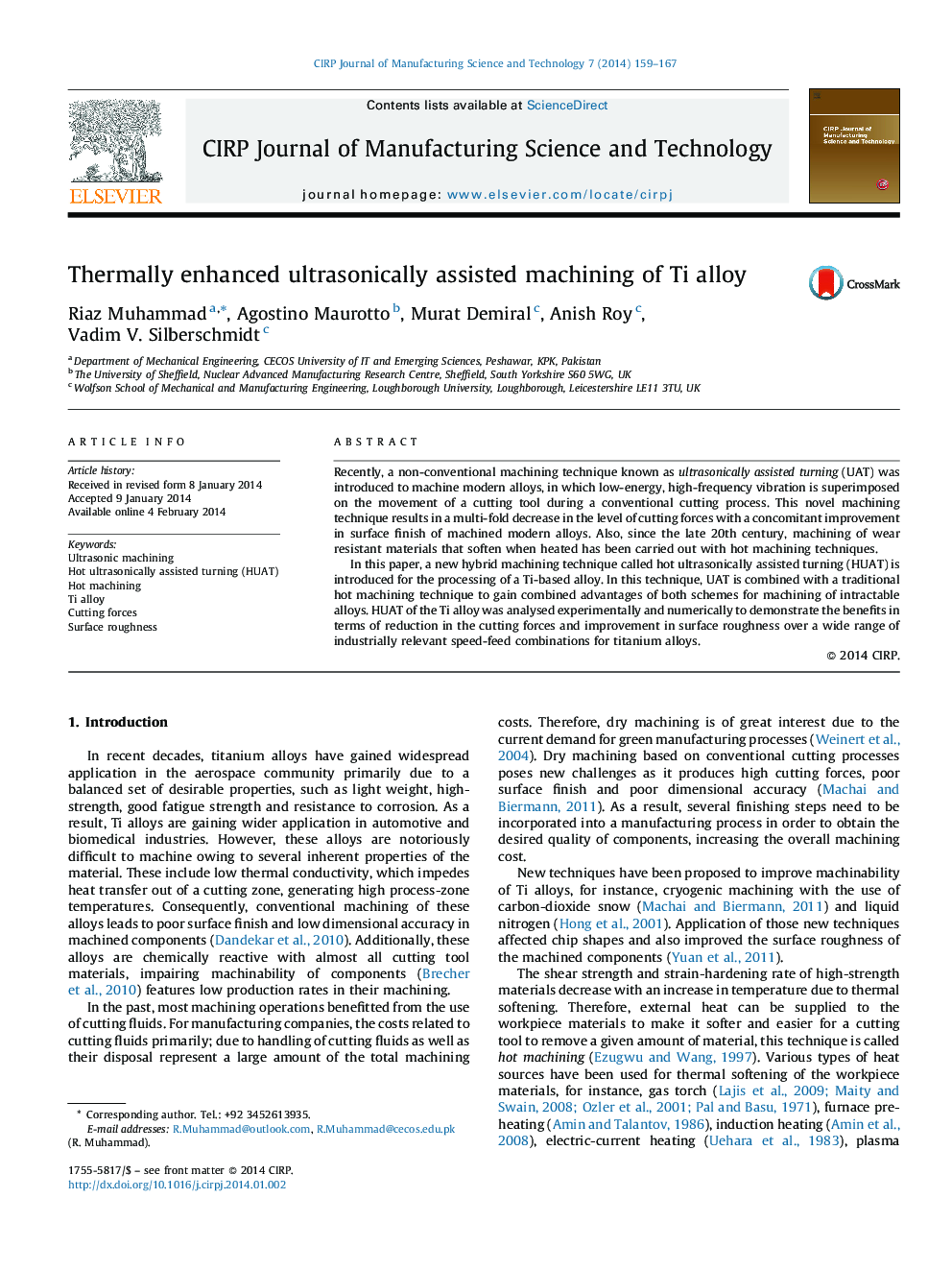| Article ID | Journal | Published Year | Pages | File Type |
|---|---|---|---|---|
| 1679709 | CIRP Journal of Manufacturing Science and Technology | 2014 | 9 Pages |
•A hybrid machining technique is introduced for the machining of beta titanium alloy.•This technique resulted significant reduction in cutting forces and improvement in surface roughness.•Experimental results were validated with the developed finite element model.
Recently, a non-conventional machining technique known as ultrasonically assisted turning (UAT) was introduced to machine modern alloys, in which low-energy, high-frequency vibration is superimposed on the movement of a cutting tool during a conventional cutting process. This novel machining technique results in a multi-fold decrease in the level of cutting forces with a concomitant improvement in surface finish of machined modern alloys. Also, since the late 20th century, machining of wear resistant materials that soften when heated has been carried out with hot machining techniques.In this paper, a new hybrid machining technique called hot ultrasonically assisted turning (HUAT) is introduced for the processing of a Ti-based alloy. In this technique, UAT is combined with a traditional hot machining technique to gain combined advantages of both schemes for machining of intractable alloys. HUAT of the Ti alloy was analysed experimentally and numerically to demonstrate the benefits in terms of reduction in the cutting forces and improvement in surface roughness over a wide range of industrially relevant speed-feed combinations for titanium alloys.
Graphical abstractFigure optionsDownload full-size imageDownload as PowerPoint slide
